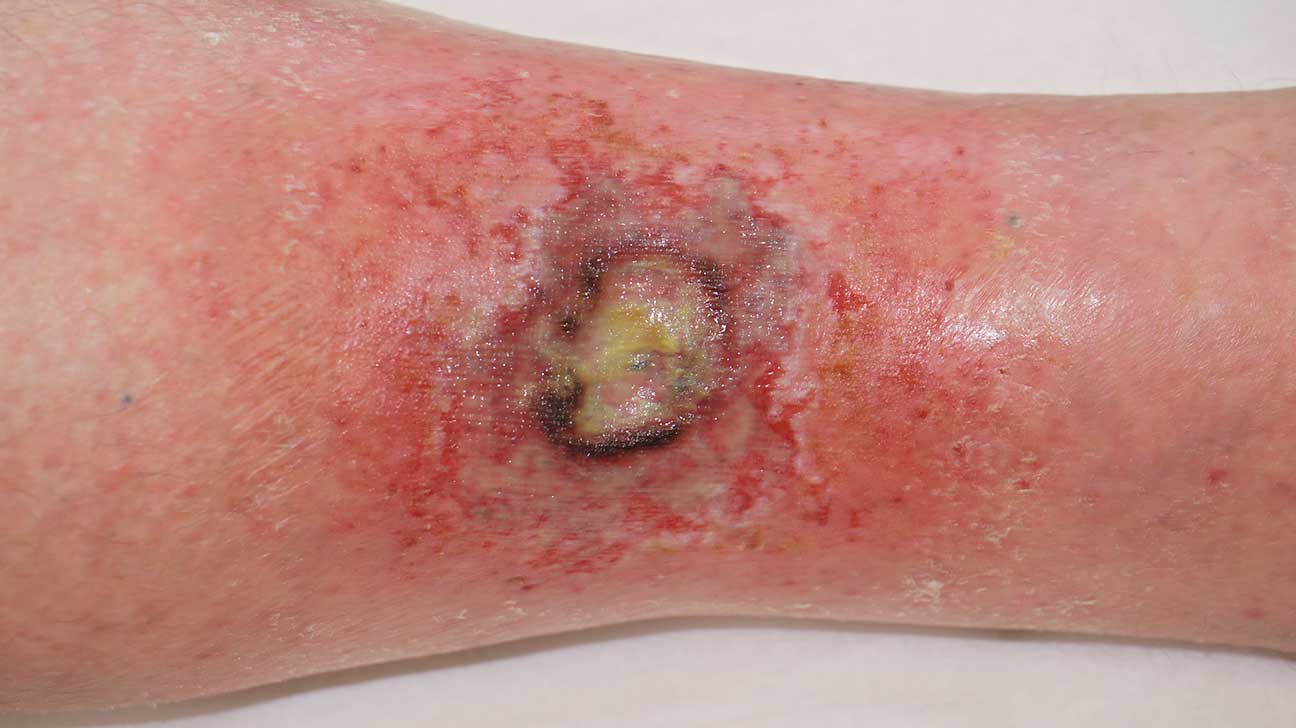Radiation Effects/ Soft Tissue Radionecrosis
Radiation damage occurs in every tissue and organ radiated, to varying degrees, leading to a progressive obliterated endarteritis (inflammation of the insides of arteries) that causes tissue ischemia and fibrosis. After radiation a small percentage of patients develop soft tissue or bone necrosis; progressive, disabling, painful, and potentially fatal due to tissue breakdown and loss of protective barriers. Radionecrosis is a complication of cancer radiation therapy, especially external beam radiation therapy (EBRT). Necrosis means the death of cells in bones, organs, and soft tissues. Side effects of radiation therapy may not present a health problem for months or even years after treatment. To irradiate a cancer tumour physicians and technicians always risk damaging nearby soft tissue and bone. Delayed radiation injuries most often stem from scarring and restricted blood flow near the tumour treatment site. The linings of blood vessels and the gastrointestinal tract are especially vulnerable to radiation damage. Radionecrosis may also be caused by radiation overdose or by misdirected beams of radiation, whether resulting from human error or from device malfunction. Delayed injuries from radiation may not be identified by a radiation oncologist (a medical practitioner qualified to diagnose and treat tumours), because symptoms from radiation treatment can occur months to years after radiation therapy. For example, patients who receive radiation treatment for prostate cancer may experience health issues many years after their initial treatment, such as painful urination or blood in their urine, incontinence, rectal pain, or painful bowel movements. And, because these symptoms don't necessarily occur immediately following radiation treatment, patients aren't likely to think the cause is the radiation therapy they received months to years prior. Tissue that is damaged by radiation may continue to break down over time if not treated. Healing the damaged tissue requires a safe and effective medical intervention. Hyperbaric oxygen therapy is the only modality to target and repair damaged tissue caused by radiation treatment. Hyperbaric oxygen Therapy (HBOT) is widely accepted as an effective treatment for delayed radiation injuries. HBOT works by improving blood circulation, supplying more oxygen to damaged tissue, reducing scarring, and increasing stem cell activity. Common treatment sites include the jaw, neck, and pelvis.
Benefits of HBOT :HBOT effects Radiation injury in the following ways:
- Saturates the affected area as well as all tissues in the body with oxygen.
- Fibroblastic proliferation begins.
- Initiates efficient collagen synthesis.
- Reduces inflammation and swelling.
- Reduces pain and discomfort.
- Heals damaged tissue with less scarring and no major side effects for most patients.
Treatment of gastrointestinal radiation injury with HBOT

